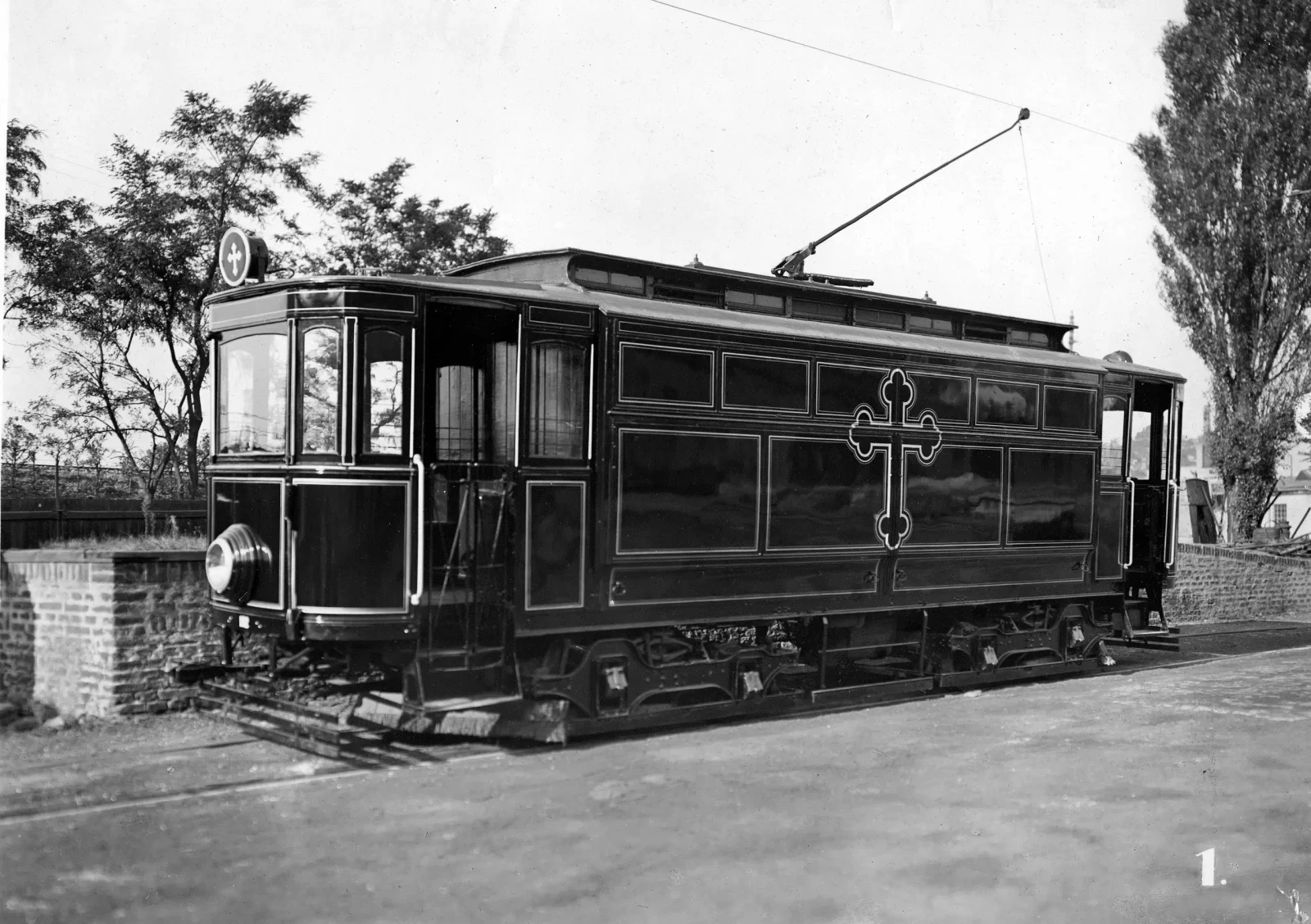More than a century ago, the streets of Prague were home to a black funeral tram numbered 152. It was not intended for transporting regular passengers like modern trams but for transporting corpses.
Why was this particular line introduced?
The idea of the tram network helping transport the deceased to newly created cemeteries, which were not near the city center, had been considered before World War I. Still, the beginning of the war postponed these thoughts indefinitely.
Shortly after the outbreak of the war, nearly twenty trams were used to transport wounded soldiers from trains arriving from the front. They were distributed to hospitals and other medical facilities. However, the number of dead soldiers continued to increase. By 1917, the morgues were already full. The tram company was asked for assistance distributing corpses in the then-black tram numbered 152. The vehicle was specially adapted to accommodate four coffins.
Encountering such a tram at night could have been more pleasant. Although black, its surfaces were lined with white lines, crosses were painted on the side of the tram, and a small cross shone on top of the tram. The legend of the black tram quickly spread among some Prague residents. People feared it; some did not even know why it was driving through the city and that it was carrying the dead. The death tram terrified them, and they feared it would also engulf them.
The funeral tram usually carried the dead to the Olšany and Vinohrady cemeteries. It was accompanied by military personnel who helped load and unload coffins and their subsequent manipulation. The funeral tram did not stop running even after the war, and its operation continued until June 17, 1919. Over the two years of its operation, it transported over 1,000 dead soldiers. However, with the end of the war and the development of road transport, it lost its purpose and was permanently abolished.
And what happened to tram number 152, then?
After the funeral tram line was abolished, it was repainted and reconstructed. For the next ten years, regular passengers rode in it again, unaware that they were sitting in the Black tram, which just a few years earlier had transported the bodies of fallen soldiers every day.
Today, you won’t be able to ride this tram anymore. It was permanently decommissioned in 1936. Let’s be grateful that no war is raging on our territory, and it does not have to run here.





